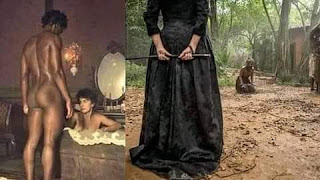The Great Womb: The Holy Whore
The Great Womb: The Holy Whore
The Great Womb of Creation, the preexistent birther of All, was once known as the Great Whore. In the Semitic languages of the Middle East, hor meant “cave” or “womb.” She was also known as a harlot—a “Womb of Light.” It is time to remember and reclaim the beauty and sanctity of our inner whore, our inner harlot, our Great Womb of Light—the original Holy Feminine.
In Hebrew the word horaa meant “instruction” and the word hor meant “light.” In fact, it was from these holy hor word roots that the Torah, the Old Testament, took its name. The Womb of Light was always known as the lawgiver, the teacher, the enlightener, the light bearer. Horasis was the ancient Greek word for Womb Enlightenment, often bestowed through the sexual union of man and woman. In the Bible, horasis was used to describe an oracular, ecstatic vision.
Throughout the world, we discover these feminine womb words at the foundation of spiritual worship—root words such as her, har, hor, hera, hara, and hero. In ancient Babylon, Ishtar was called the Great Goddess Har, Mother of Harlots. “Her high priestess, the Harine was considered the spiritual ruler of the city of Ishtar.” In the indigenous Huichol tradition of Mexico, the name for the primordial grandmother goddess of the ocean is Haramara: Womb Mother. We also find these root words, sequestered like magical pearls, inside words such as chariot, chorus, charm, and harmony. The word charis, the name the holy men of India—devotees of Shiva-Shakti—give to the entheogens they smoke, means “goddess” or “menstrual blood,” and is also the root of the Christian word eucharist.
Following the same magical threads, the Greek words christ or chrism, meaning “the anointed one” or “the anointing oil,” are a contracted form of the words charist and charism, which blooms out into the word charisma, describing an “anointed” or “christed” person filled with the enchanting, magnetic feminine light of the blessed Cosmic Womb. Moon blood was known to be the original blessing, gifted from the wise womb of woman. Chrism is the soul of the flesh, the golden serpent of life force. The Christ is Shakti, our primordial life energy.”
In ancient Sumeria, the sacred sexual temple priestesses were called Sal-Me, meaning “divine yoni women.”Sal was the Sumerian word for both woman and yoni, and Me meant sacred, having divine properties. Sal-Me is the origin of the name Salome, which described a female sexual initiate of the Womb Mysteries. It was Salome, as a sacred womb priestess, who performed the mystical dance of the seven veils, for which she was later demonized. In ancient Sumeria, the pictogram of the vulva was called sal, and was the sister of the Hebrew daleth—the downward-pointing triangle, symbolizing the yoni, as the cosmic gateway.
The original teaching of salvation referred to the primordial redemption of consciousness, experienced through the shamanic return to the spiritual Great Womb of the Yoni-Mother. Isis, as the Queen of Heaven, was known by her devotees as the savior—she who bestowed the healing feminine balm, poured lovingly from the center of all creation, the great Cosmic Womb.
In ancient Sumerian texts, the Goddess Inanna’s boat of heaven is compared to her “wondrous vulva,” meaning that the title of the Queen of Heaven (attributed to Inanna, Isis, and the Virgin Mary) could also“be interpreted as the queen of the vulva or the queen of the womb.
This Womb of God lives at the root of all religion. The opening Hebrew words of Genesis, B’rashith, are usually translated as “In the beginning,” but there is a deeper and more occult meaning that has been lost, or deliberately obscured, which is translated as “In the Womb,” referring to the cosmic feminine generative force that birthed all creation from her primordial Cosmic Womb. Likewise, apocalypse means the “revealing of the womb,” and comes from the word root calypso, which means that which is covered, concealed, hidden in the “chalice” or “cauldron”—ancient symbols of the womb.
In Russian folk traditions there are feminine mystery teachings preserved in stylized, symbolic embroideries of rozhentsas, archaic birth mothers, also called “original mothers.” These artisan teachings show a female body in a birthing position with arms and legs outstretched. The yoni is depicted with an X at the center of a womb cross—also the sacred symbol of the Cathars. Often interpreted as a solar symbol, the cross was first the womb gateway of the Mother of Life.
The Yoruba culture of Nigeria views the world as a nested set of mother-wombs powered by the mysterious spiritual mother-force called Aje, originating in the womb of the Great Mother deity, and called “the secret of life itself.” It flows into human women through their own sacred, life-giving womb. Aje gives women earthly, celestial, and spiritual powers that surpass men, but those who use this power, the Elders of the Night, are called to the highest moral and spiritual standards—they must use this power in service of the good of all. They are often elderly female priestesses, respectfully referred to as “the owners of the world” because of the power of the divine womb-force they channel.“Our mythical origins whisper with many lost allusions to the forgotten Sacred Feminine; and as she was stripped from our lives, she was also stripped from our language and our consciousness. By reclaiming our holy feminine language, we begin to rebirth the lost goddess back into our psyche—and into our world.
We are redreaming our cosmology—a new, yet ancient, way of perceiving the horizons and landscapes of creation. The vast wealth of knowledge of this ancient cosmology, often oral, has been lost and destroyed as the war against the feminine realms has been ferociously waged. The libraries may have been destroyed, but the memory lives on within our magical feminine DNA.




Comments
Post a Comment